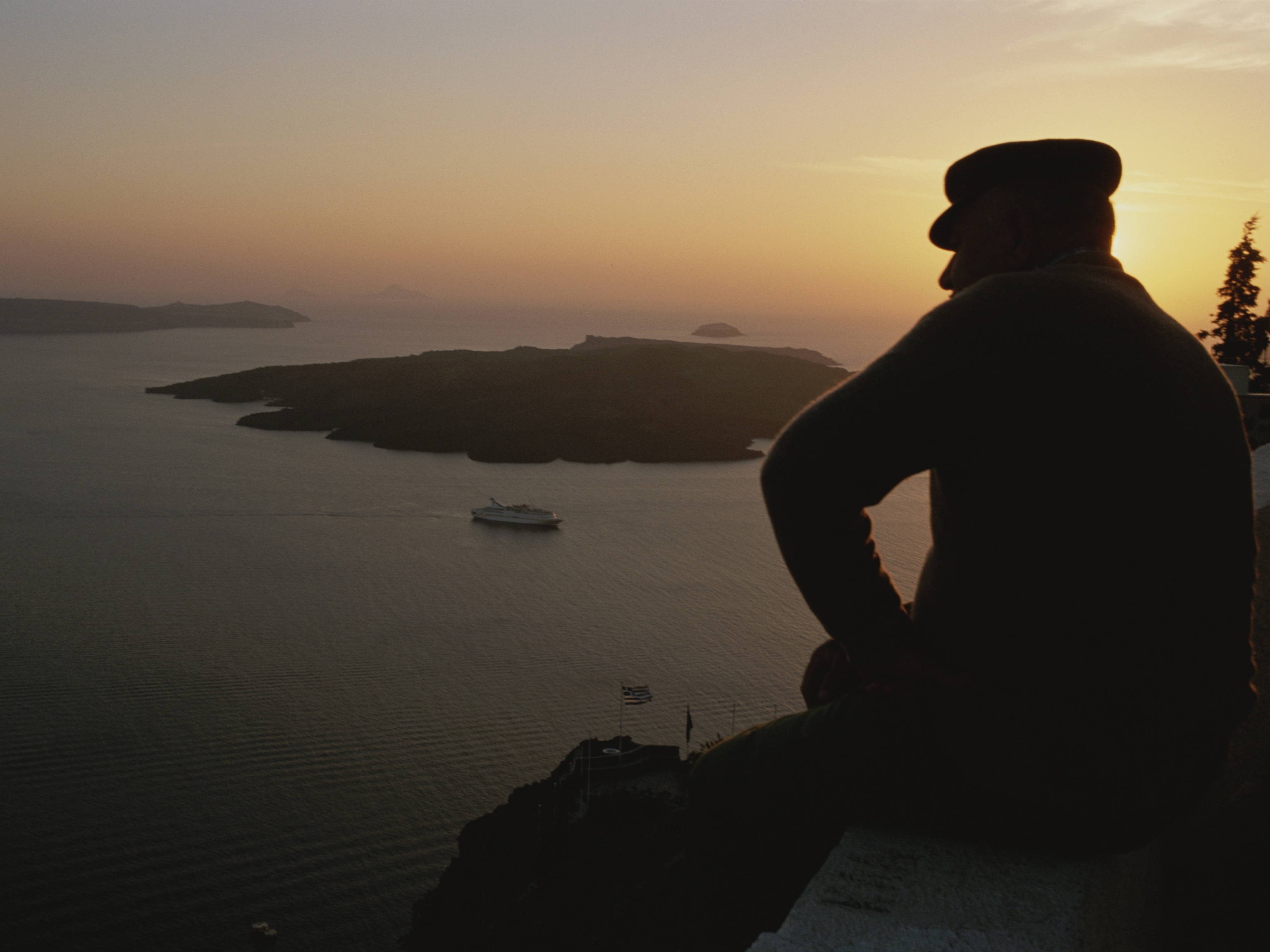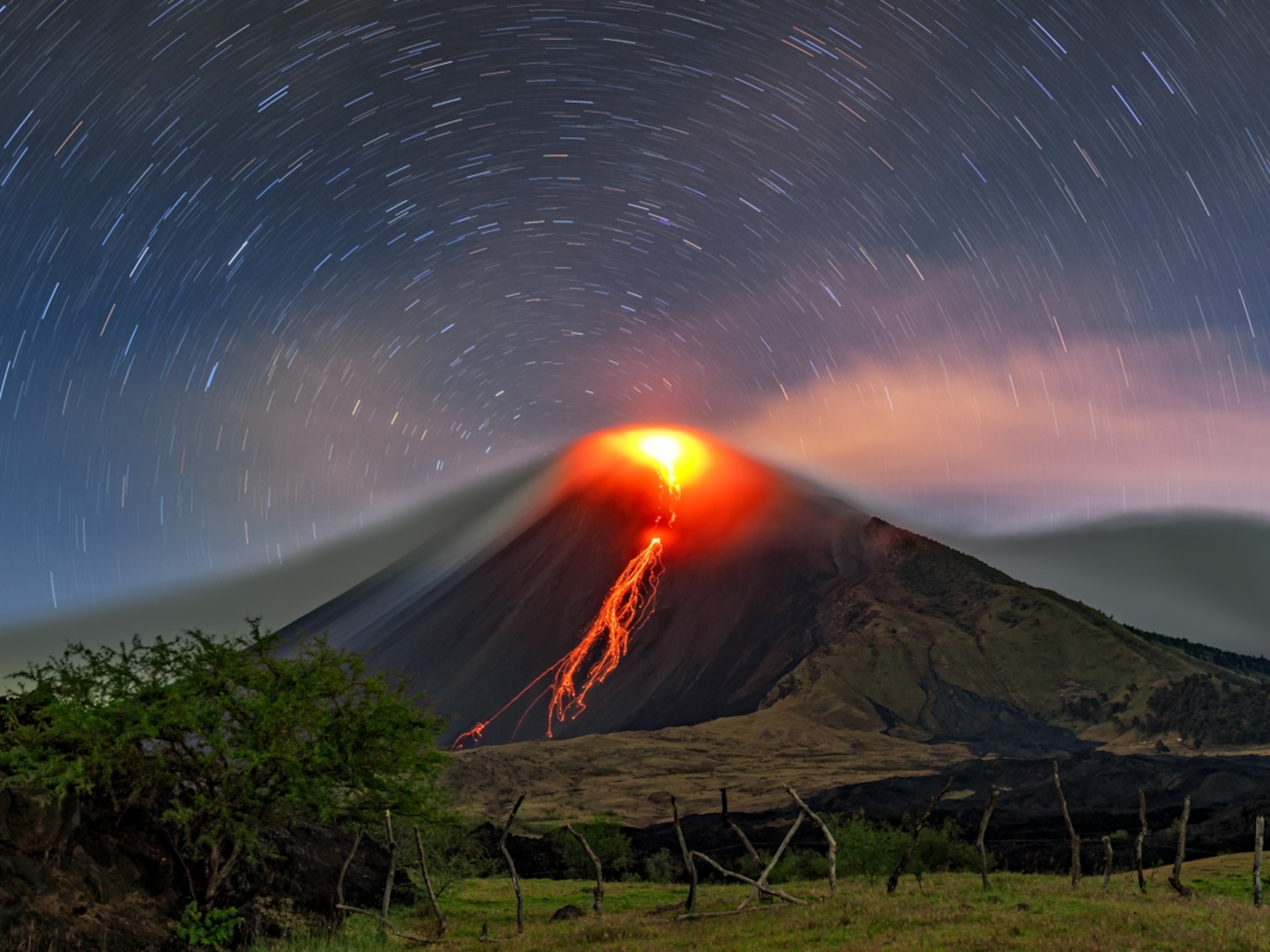
Supervolcano Rained Acid on Both Poles—But Wasn't So Bad After All?
Toba was Mount St. Helens times 5,000, but new evidence softens the fallout.
It was the largest volcanic eruption of the last two million years—an estimated 5,000 times larger than Mount St. Helens's 1980 blast, with enough lava to create two Mount Everests.
Roughly 74,000 years ago, Indonesia's Toba supervolcano pumped massive amounts of sun-shrouding ash and gases into the atmosphere, cooling the planet, possibly devastating early humanity, and—a new study reveals—raining sulfuric acid on both poles. (How Toba's eruption changed Earth.)
Scientists have long debated just how extensive and enduring those effects were. One study, for example, suggested the Toba blast spawned a thousand-year ice age that only some 10,000 individuals survived. Another has found evidence of humans thriving in relatively nearby India shortly after the eruption.
The new study—based on acid rain-tainted ice cores from Antarctica and Greenland—suggests Toba's fallout wasn't quite as catastrophic as might be expected.
The Antarctic ice core, for example, even bears traces of a warming event just after the Toba eruption—contrary to a strong cooling signal seen in the Greenland cores.
"That means there's no long-term global cooling caused by the eruption," study co-author Anders Svensson said. If there had been, you'd expect to see evidence of a chill at both Poles.
In fact, the post-Toba Antarctic cooling spike looks well, relatively ordinary. "There may have been shorter [global] cooling of a duration of maybe 10 or 20 years, like we see for more recent"—and much less powerful—"volcanoes," said Svensson, of the Niels Bohr Institute's Centre for Ice and Climate in Copenhagen.
(Related: "Yellowstone Supervolcano Discovery—Where Will It Erupt?")
Toba's Human Toll
Toba was "certainly not causing long-term cooling of a thousand years, or even a hundred," Svensson said. "It seems like humans lived on and everything is recovering."
Of course that would have depended in part on location, location, location, as real estate agents say.
It's speculated that prehistoric human populations—some perhaps relatively fresh out of Africa—were ravaged by the volcano's environmental fallout as far away from Indonesia as modern-day India.
That ancient toll may come in to sharper focus as a result of the new ice core data, coupled with ash readings from closer to the long-gone volcano. By correlating the various dating findings, the team says, they'll be able to better estimate when the eruption occurred, which should in turn allow archaeologists to better gauge whether artifacts date from pre- or post-Toba times.
Whenever Toba exploded, it's unlikely we'll see such a mega-eruption any time soon. "It's a very low risk," Svensson reassured.
The new Toba-volcano study was published online by the journal Climate of the Past on Monday.
More: See pictures of a new supervolcano found in Hong Kong >>





